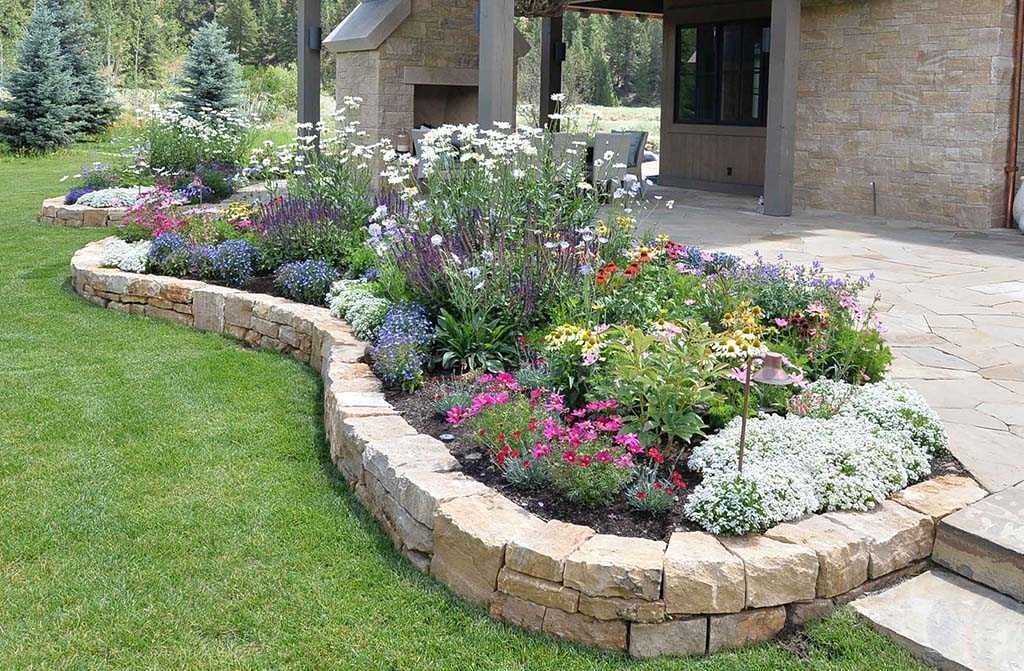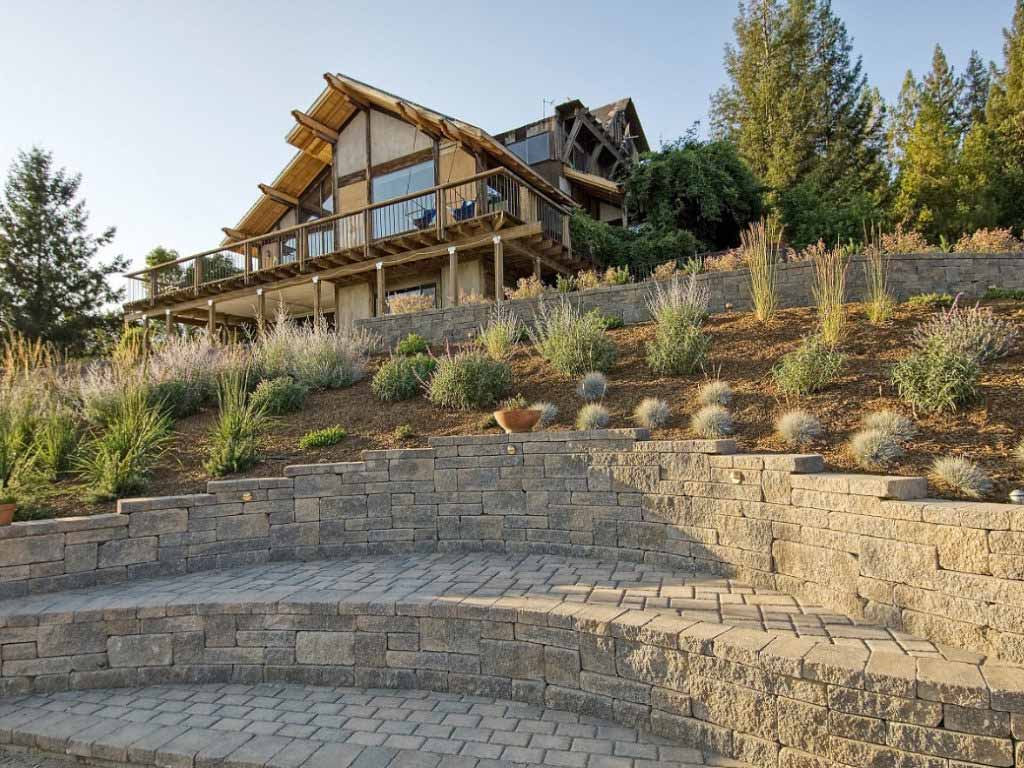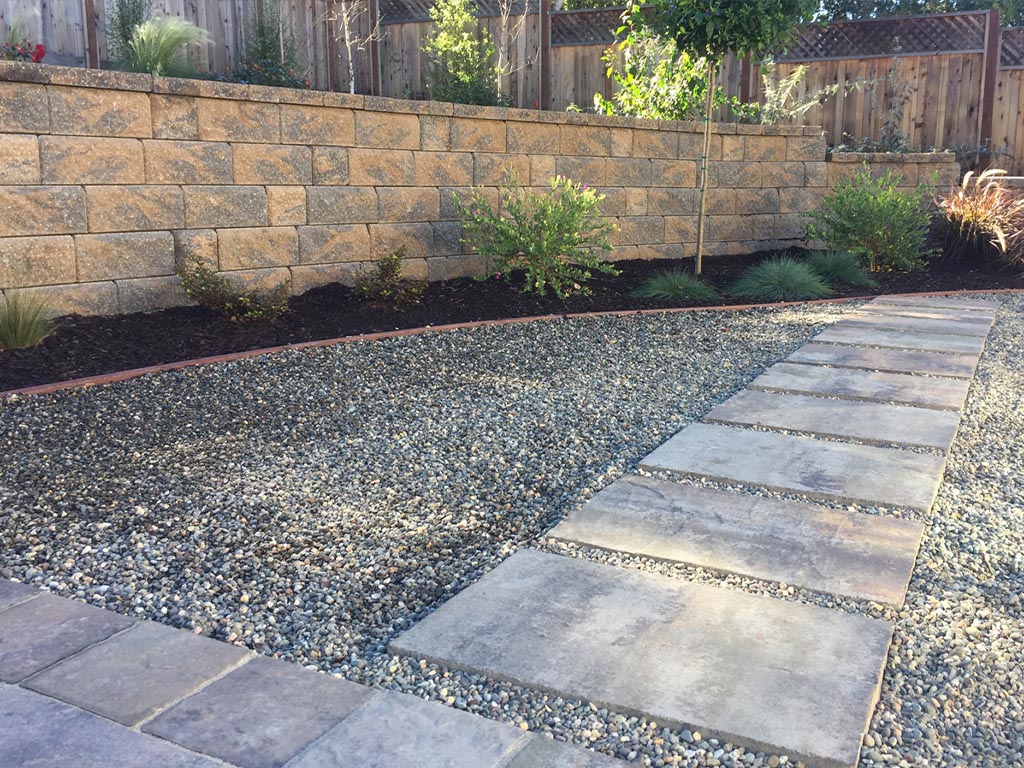How to Create Fire Resistant Landscaping to Protect Your Lawn from Wildfire
Share this Article

Wildfires are extremely damaging to the environment as they can destroy acres of land in a surprisingly short amount of time. Every year, thousands of homeowners lose their homes and land to these natural disasters. Alarmingly, 25% of the fires in the United States destroyed non-federal land and damaged 10,500 homes.
One big reason why so much land was burned is due to a lack of fire landscape design.
Many plants that are abundant in rural landscapes like dried grass, weeds, and foliage are the perfect fodder for wildfires – as it allows them to spread through large areas quickly. Certain plant species and landscape designs are more prone to catching flame as well. Homeowners in the path of these fires could be unknowingly creating landscapes that help wildfires become even more destructive.
In this post, we want to provide some fire landscaping tips to ensure your yard is more flame resistant and protect your home from these dangerous wildfires.
1. Plant High-Moisture, Fire Resistant Gardens

Unfortunately, there are no “fire-proof” plant species that will stop a wildfire in its tracks.
However, high-moisture plants that hold lots of water may help to slow it down. Plant species that retain water inside of their stems are leaves that are best for fire-resistant landscape design. It is highly recommended that you plant some of these types of flowers close to your home to protect them from a quickly spreading fire.
For instance, succulents and cacti are great for both high drought areas and fire landscaping as they conserve water quite well. It is no wonder that they are abundant in desert-like environments where the risk of wildfire is high.
There are plenty of flowering bush plants and other species which can support fire-resistant landscaping, too. Some of the most fire-resistant plants include:
- French lavender
- Red monkeyflowers
- California fuchsia
- Columbia lily
- Sage
- California lilac
- Yellow or purple ice plant
- Dead nettle
It is best to avoid highly flammable plants, which include eucalyptus, rosemary, ivy, ornamental grasses, and lichen-type plants. If you live in an area that is at high risk of wildfire, it is recommended to limit or avoid planting these near your home.
2. Reduce Climate Threats that Lead to Wildfires
Caring for your landscaping’s natural environment can significantly reduce the threat of wildfires. Nothing catches fire quicker than dried-up leaves, grass clippings, and branches. Staying on top of lawn maintenance not only makes your home look better, but it can also help to create a more fireproof landscape.
Be sure to rake up dead leaves, sticks, and grass or plant clippings throughout the year – not just during the fall. Wildfires generally start spreading in August, but accidental fires can happen any time of year. Clearing out dried foliage that could fodder the flames will help to stop or slow down a fire.
You should also keep your lawn and gardens well-watered, especially in the summers. Consider installing a sprinkler or irrigation system with a set timer so your lawn is always hydrated.
3. Use Drought Tolerant Landscaping Materials

Consider using fire-resistant material when designing outdoor spaces. Rather than using wood tools and materials to build your deck, patio, or garden boxes, consider swapping it out for stone, brick, or cement. These are far more fire-resistant and they can even be better for the environment, too, when collected from sustainable resources.
Another great tip is to install retaining walls throughout your yard made of natural stone. Retaining walls can support fire landscaping by preventing erosion and creating stopping points on natural slopes. If there is a large hill behind your home, you can add some stone retaining walls to protect your home from landslides and fires, since they can help to slow the spread.
Retaining walls can also be used at the bottom of a hill or cliff to provide additional structural support. Wildfires can cause massive erosion, and retaining walls work to stabilize the soil for added protection.
4. Support the Local Ecosystem
Some areas of the country are more prone to wildfires than others due to their environment. In the United States, about 40% of all annual wildfires occur in California, as well as Texas, Colorado, and Arizona. These areas tend to have dry seasons, where plant life dries up, creating a perfect landscape for wildfires to spread.
However, there are many areas across the country at risk of wildfires during dry seasons or periods of drought. Even parts of the country in the Pacific Northwest and Alaska have moderate to high fire risks!
It is important to learn about the natural ecosystem around your area to create fireproof landscaping. For instance, if your area has dry, clay-like soil, you may need to add mulch around your yard to help hold in moisture.
It is also wise to plant foliage that is natural or well-acclimated to your area. Plants that do well in humid environments (like ferns) will not thrive in a drier heat. They will quickly dry out, creating a fire hazard. By only planting foliage that is indigenous to the area, you can support fire landscaping with healthy plant life.
Finally, educate yourself on how to nurture natural plants during the off-seasons. Perennial plants like goldenrod, yarrow, hummingbird sage, and California fuchsia should be pruned after their flowering season. This will help the plant grow stronger without leaving dry, dead branches behind that could catch flame.
5. Learn About Defensible Space Zone Laws
Video source: www.readyforwildfire.org
Some states have certain legal requirements for building defensible space due to high wildfire risks.
For instance, in California, it is required that there be a clearance space ranging from 30 to 100 feet around a home or other structures. In zone 1, which is spaced 30 feet from the building, all dried plants or foliage must be removed. No flammable vegetation should be planted, and all trees must be spaced 10 feet apart from each other.
In zone 2, which is the space 100 feet from the home, grass should not be taller than 4 inches, and any tree, bush, or shrub must be spaced at least 10 feet away from each other. This space ranges depending on the type of plant, elevation, and slope of the land.
Even if your state does not have any defensible space laws for fire landscaping, you might want to consider following some of these recommendations. Spacing out your foliage strategically can help to reduce the risk of wildfire spreading closer to your home.
6. Consider Prescribed Burns
One strategy that many fire departments and forest management organizations will use to control the spread of wildfires is conducting prescribed burns to at-risk areas. Plots of land are burned with controlled fire and flammable fuel, which manages the landscape by purposely destroying dried grass and other factors that lead to wildfires.
This practice also helps to support biodiversity and replenish the area. This actually helps to enrich the soil by killing off pests and allowing the ground to soak in nutrients from the sun and rain. This helps new plants to grow back stronger next season.
While this is usually a tactic used around forests and in large land areas, it is possible to do on residential lands and private property. Prescribed burns are also recommended to use for weed, vermin, and pest control on farm land or even large gardens.
However, you must be extremely careful as you can easily lose control of the fire if you do not know what you are doing. It is best to only try this tactic if you have special training or by partnering with a fire contractor service to do it for you.
7. Prune Overhanging Branches Regularly
If you have any tall trees or thick bushes near and around your home, you must keep the branches pruned. If they overhand above or near any structures, a wildfire can easily spread. You should also shape any bushes and shrubs so they do not lead up to windows around the home, where fire can quickly enter. Pruning branches correctly will also help trees and plants grow better, which reduces the risk of dead limbs that are highly flammable.
It is recommended that branches be at least 6 feet above the ground – and branches between two trees are more than 10 feet apart.
In some cases, you can do this yourself with pruning tools like shears or (if you dare) a chainsaw. However, if your trees are exceptionally tall or the branches are thick, leave it to the landscaping experts. There is no need to risk ruining your roof or hurting yourself by accidentally chopping off large branches.
8. Keep Flammable Items Stored Safely

Having a fire pit in the backyard can be great for relaxing and cooking up s’mores with the family. But it can turn into a perfect setup for a major fire hazard if a wildfire comes through.
First, you should avoid storing firewood and kindling anywhere near your home or other structures, such as a shed or patio. Instead, keep them stored far away in an open area or a fireproof storage container, such as a metal bin.
If you live in an area that is prone to wildfires, you should use your fire pit cautiously. Any sparks that escape could catch a flame on dry land if the fire danger rating is currently high. Be sure that your fire pit is enclosed and you only use it as directed.
Other common household materials can be extremely flammable and should be stored away properly when not in use. Cloth tarps, hammocks, aerosol cans, cleaning products, and cans of paint can catch flames. Even some pool cleaning chemicals and common car maintenance chemicals are highly flammable and should be stored appropriately.
9. Lay Out Your Landscaping Walkways Wisely

Another common fire landscaping mistake that homeowners often make is using flammable materials in gardens and lawns for design purposes. Using wood chips or bark to cover garden beds or to create pathways could cause a wildfire to spread directly towards your house.
Instead, it is better to build pathways and garden beds with stone blocks or bricks. This not only creates a more impressive design, but it can protect your home from quickly spreading wildfires. The best fire landscaping stones are limestone, sandstone, and kiln-fired brick.
10. Plant Less Flammable Trees and Shrubs

You may be surprised to learn that some trees are naturally more fire-resistant than others – and can help to slow the spread of wildfires. High-moisture trees with thick leaves and foliage are best, as they will not catch flame as quickly as drier trees. Deciduous trees which lose their leaves seasonally are more fire-resistant than other species as their leaves hold in lots of water.
Some of the most fire-resistant tree types include:
- Oaks
- Flowering horse-chestnut
- American mountain ash
- Southern magnolia
- Mediterranean cypresses
- Ponderosa pine
- Japanese elm
Hardwood trees (including ash, maple, pine, and poplars) are less fire-resistant and may catch flame more easily. It is best to avoid planting these around your home or to keep them carefully pruned.
There are also fire-resistant shrubs, grasses, and ground cover foliage that can be placed throughout your yard. This includes buffalo grass, boxwood shrubs, a tall hedge, fern leaf, and buckthorn. Some types of artificial turf are fire resistant as they are made from plastic polymers that melt, rather than catch flame.
Conclusion
You can create a yard that is both beautiful AND environmentally conscious with a fire landscaping design.
By choosing components that are fire-resistant and creating a stronger natural ecosystem, you can protect your home and land from destructive wildfires.
Our team of expert landscape designers at Central Home Supply will help you build the fire-resistant lawn of your dreams with top-quality materials. We sell over 100 types of natural stone designs, along with pavers, retaining wall materials, and much more.
Contact our team to learn more about our landscaping solutions and receive some expert advice on fire landscaping.

